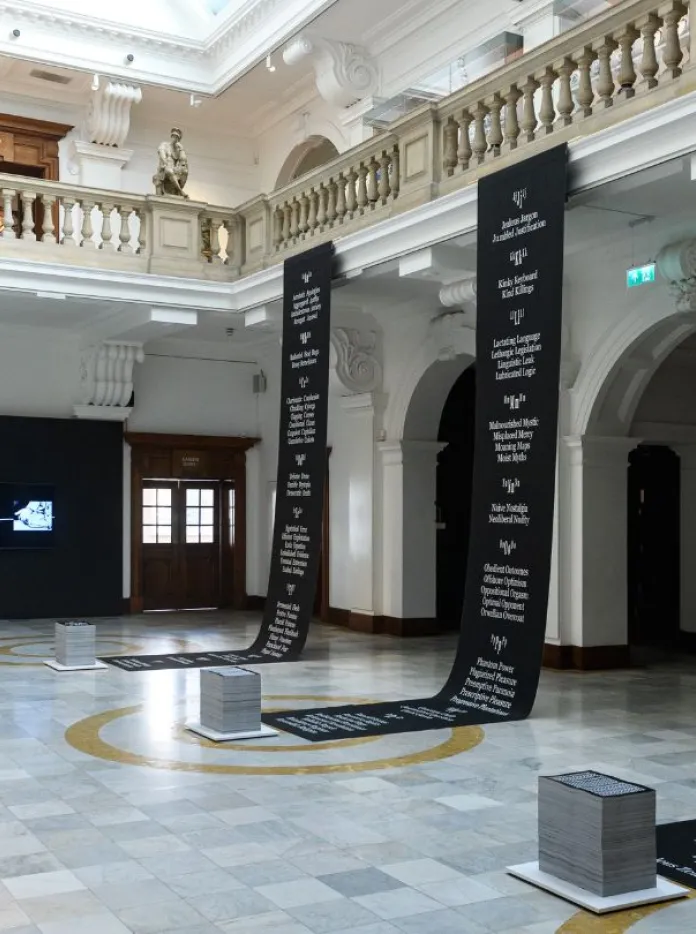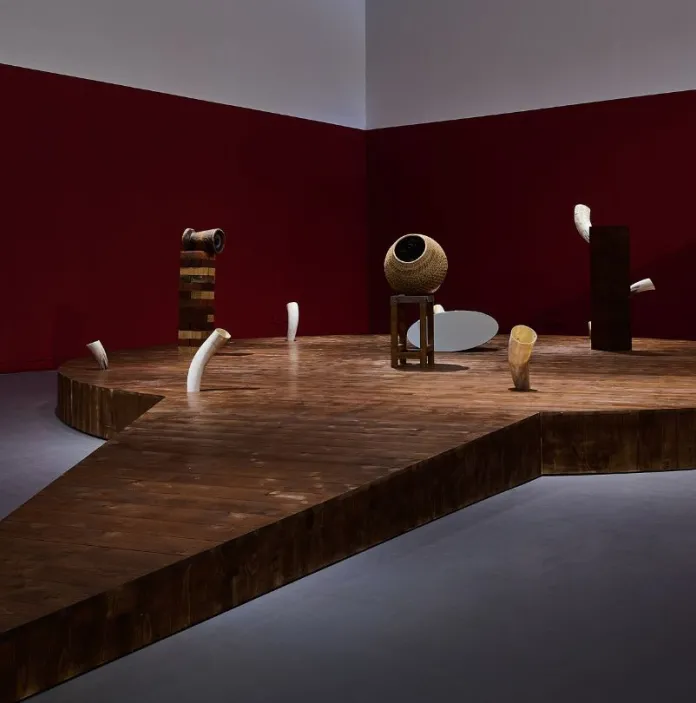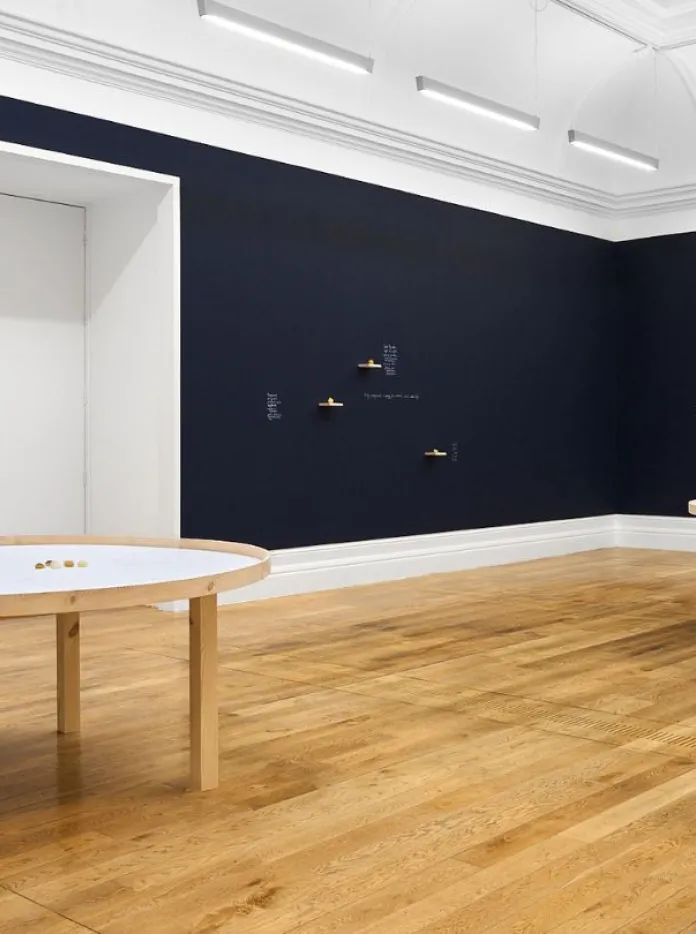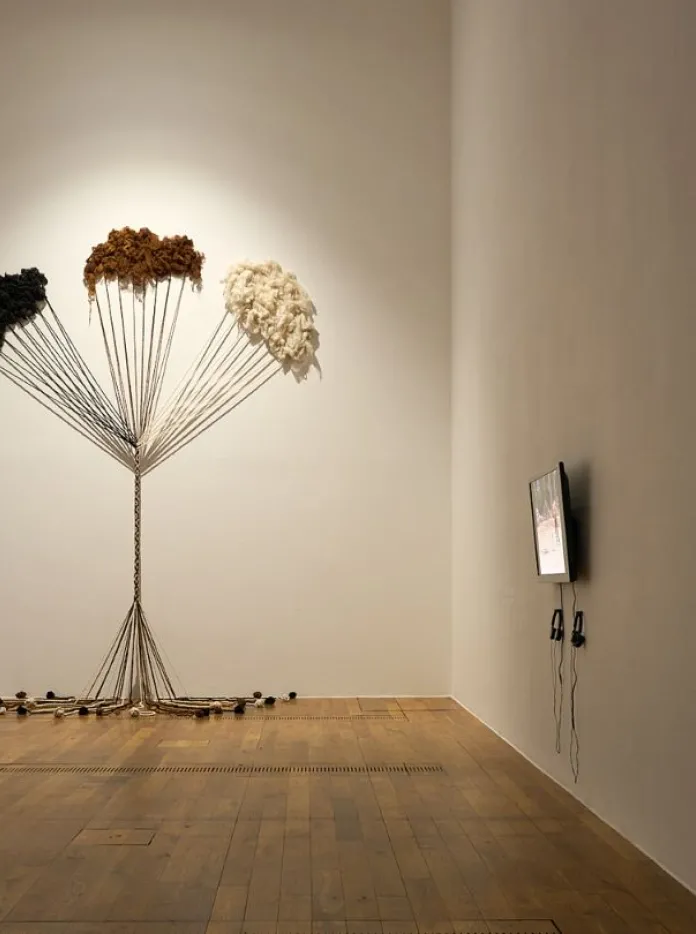Artes Mundi translates into Latin as “arts of the world” – a fitting title for an art prize with a shortlist that includes artists from countries as far-reaching as Zambia and Peru.
And works from all of these shortlisted artists have now gone on display in Wales, as part of the four-month long showcase, running from late October to the end of February, that precedes the awarding of the Artes Mundi Prize.
With a £40k payout for the winner, the prize, established in Cardiff, is the largest contemporary art prize in the UK, and is now in its eleventh year, having been contested every other year since its launch in 2003.
Like previous editions of the showcase, the Artes Mundi 11 exhibition will be split between multiple venues around the country. The primary hub of the exhibition, however, will be the National Museum Cardiff in the Welsh capital, where work from all six artists shortlisted for the prize will be represented in an exciting and engaging group presentation.
Each of the artists will then have a solo display in four other venues, located in Aberystwyth (Aberystwyth Arts Centre), Cardiff (Chapter Arts Centre), Swansea (Glynn Vivian Art Gallery) and Lladuno (Mostyn).
So, who are the artists competing to take home the esteemed prize this year?

Kameelah Janan Rasheed is an American artist known for her work in installations, book arts, and immersive text-based installations, which explore the poetics, politics, and pleasures of communication.
Her exhibits for the Artes Mundi exhibition play into this theme, with an immersive graphic installation of new and existing prints, writing, drawings, banners, photographs and video at the Glynn Vivian Art Gallery in Swansea. At National Museum Cardiff, a related installation will be shown incorporating images and text from a range of sources, fragmented and layered to create new possibilities and meaning.
A member of the Yawnghwe royal family of Burma (now Myanmar), Sawangwongse Yawnghwe had to flee his home country as a result of a military coup in 1962 and grew up in Canada.
Drawn from these experiences, Yawnghwe’s paintings discuss the history of Myanmar, speaking on conflicts related to drugs, revolutionary armies and state violence, ultimately shining a spotlight on a complex political landscape. Yawnghwe’s works for Artes Mundi 11 includes a new series of large-scale paintings, which will be displayed at both Aberystwyth and Cardiff, discussing the idea that archives and documentation cannot fully capture a nation’s truth.
Anawana Haloba is an artist from Zambia who creates performative exhibitions that explore the positions of different societies within varied political, social, economic and cultural contexts.
As part of the Artes Mundi exhibition, she will be presenting a large-scale installation in Aberystwyth, which, in an hourly performance, functions as an opera with spoken word and song emanating from a series of objects set within a stage. Complementing this work, another of Haloba’s interactive sculptures will go on show at National Museum Cardiff, where viewers are invited to listen to whispered fragments of text, music and ambient recordings emanating from ceramic structures.

Jumana Emil Abboud draws on folklore, myths and storytelling to celebrate heritage and identify interconnectedness between different peoples through drawing, sculpture, video and performance.
For AM11, Abboud will showcase new works focused on the North Wales landscape. These works were inspired by workshops and immersive walks with local communities that dug into the region’s history, myths and folktales. These Welsh-themed pieces will be presented alongside drawings, writing and objects from previous iterations of these collective workshops from different parts of the world, including Palestine. A further selection of these drawings and objects, emblazoned with handwritten charms and spells, will be shown at the National Museum Cardiff.

Sancintya Mohini Simpson is a descendant of indentured labourers sent from India to work on colonial sugar plantations in South Africa, and her work is rooted in this family background, commenting on the complexities of migration, memory and trauma within the colonial archive.
Her exhibits at Artes Mundi will be multi-disciplinary and multi-sensory, ranging from a watercolour work referencing Indian miniature art at National Museum Cardiff, to a video installation at the nearby Chapter Arts Centre venue. Entitled Dhuwã (a term used by indentured people of Natal for "smoke"), the video will depict sugarcane plantations engulfed in flames, with the smell of smoke perfuming the gallery.

The final name on the shortlist is Peruvian artist Antonio Paucar. Paucar draws on his origins and the material culture of his indigenous Andean background, tackling contemporary conflicts faced by indigenous peoples and the ensuing environmental threats to place and home.

For the Artes Mundi exhibition, his showcased works, housed in venues in both Cardiff and Llandudno, will range from displays of spiralling hand-woven alpaca wool sculptures to a video of Paucar himself in the Huaytapallana mountain range, a place of spirituality for the Mantaro Andean people, where the artist writes warnings about the impacts of climate change in his own blood.
The Artes Mundi 11 exhibition will run from 24 October 2025 to 1 March 2026, with the winner of the overall prize being announced at a ceremony at the National Museum Cardiff on 15 January 2026. Admission to the exhibition is free.
Find out more about the Artes Mundi award, and this year’s exhibition, on the organisation’s official website. Alternatively, uncover more of the amazing art galleries around Wales.
